The (bluefin tuna) nigiri etiquette manual
Summary:
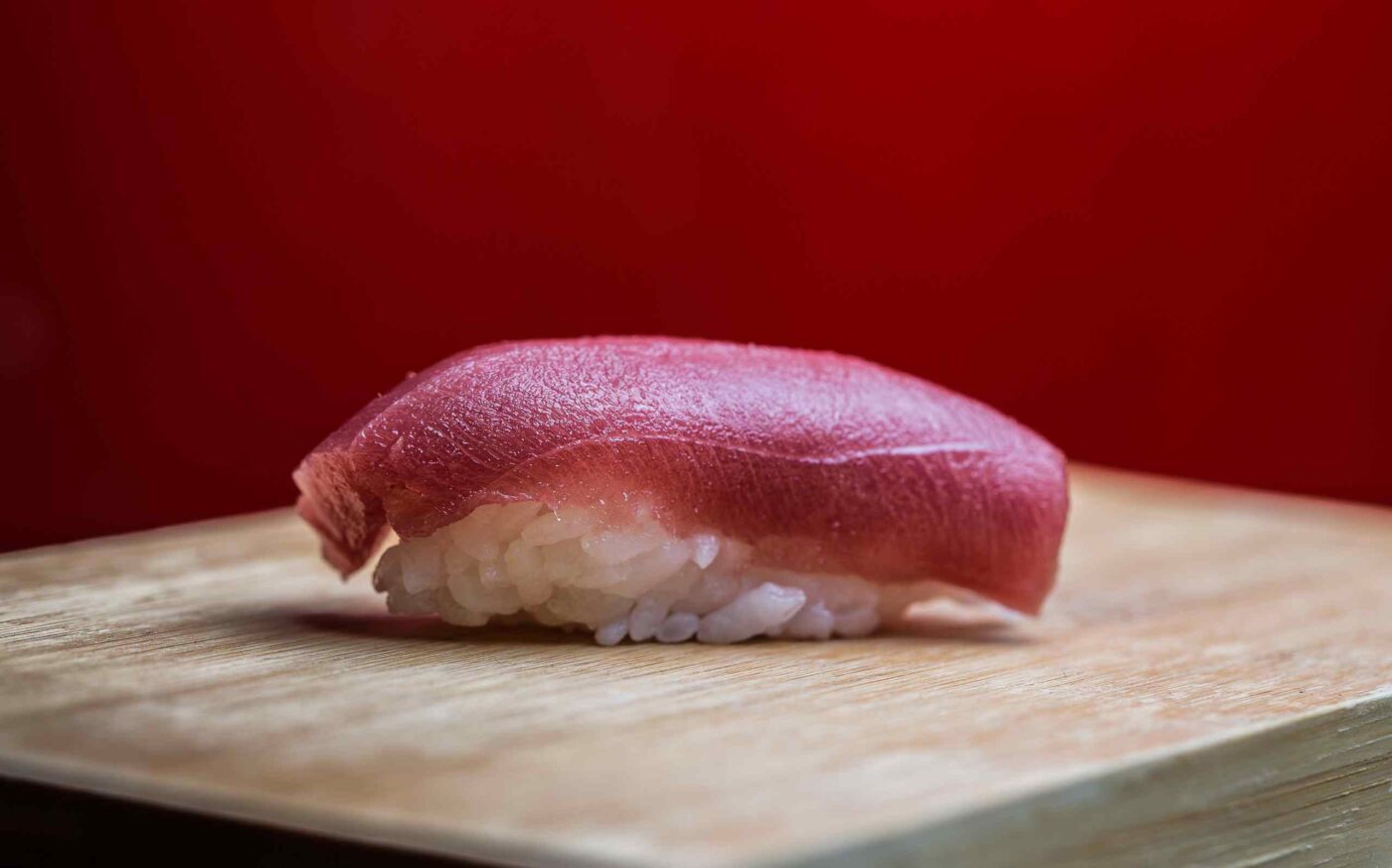
A logbook by Sensei Hiroshi Umi.
Just like tapas, pizza and kebabs, sushi is now universally known, an exportable insignia and the touchstone for any chef aiming to master the art of raw fish. Excellent restaurants based on this particular speciality can be found from the island of Tasmania to New Mexico, via anywhere you choose to mention in Old Europe. But although each individual may have their own methodology and ritual, one must always respect the work of the itamae (sushiman), who will undoubtedly have spent hour upon hour refining the art of cooking the rice, cutting the fish to precision, and moulding these miniature delights by hand.
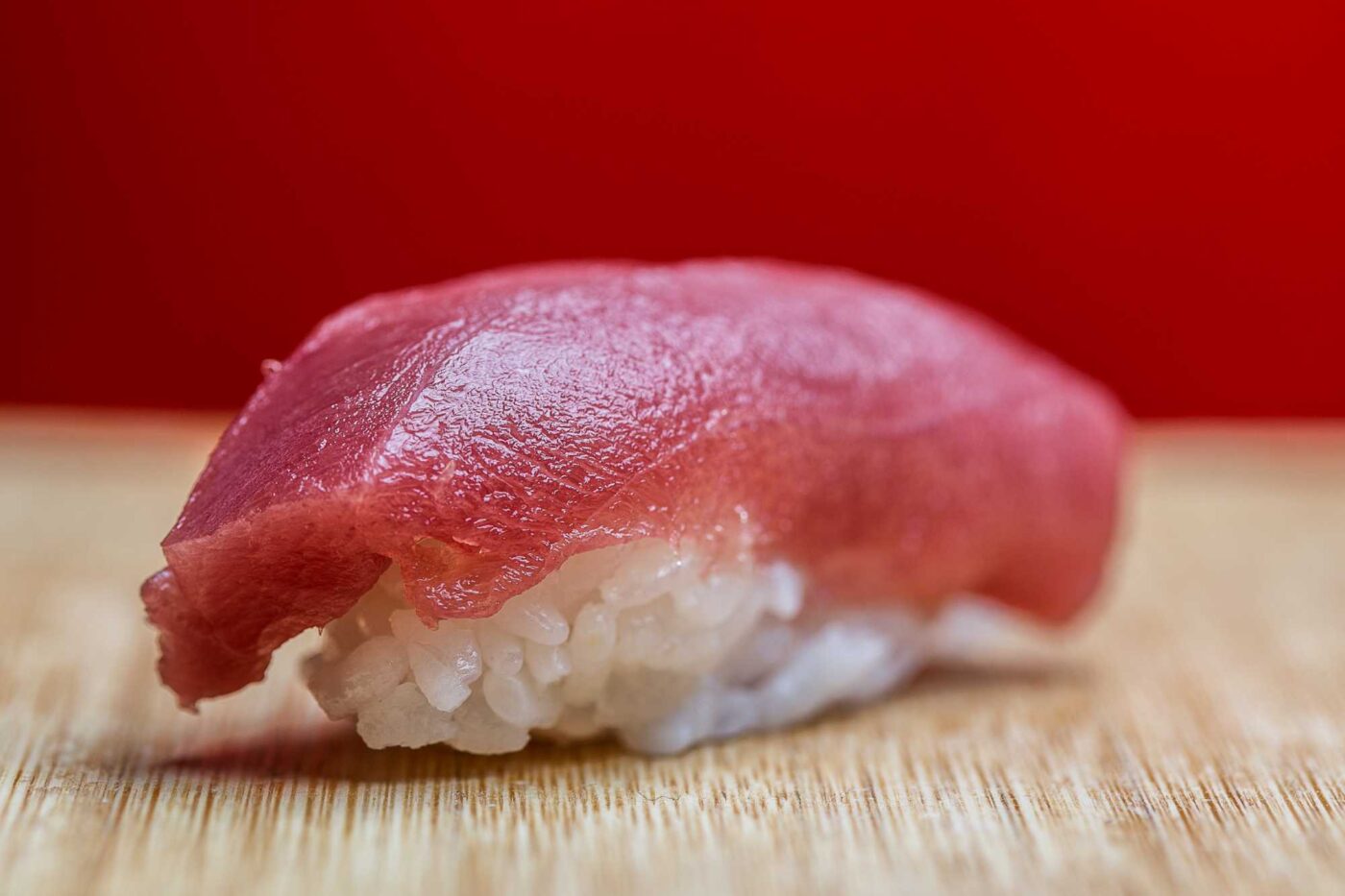
And so we here offer a few tips to patrons as to how they should conduct themselves, honour the work of the chef, and follow proper etiquette in eating the finest nigiri topped with Fuentes bluefin tuna (toro, chutoro), although other outstanding examples are served in my homeland using ika (squid) kuruma (prawn), hotategai (scallop), akagai (clam), anago (moray eel), hamachi (lemon fish), torigai (cockle), hirame (turbot), aoyagi (American clam), awabi (abalone), saba (mackerel), amaebi (shrimp) kohada (sardine), sayori (flying fish)…
El nigiri: los orígenes
It should be recalled that raw fish served on rice became popular during the Edo period (between 1600 and 1868), applied to the region of Tokyo and its Bay. Culinary history books assert that it was the humble chef Hanaya Yohei who first devised this dish, to be eaten in a single mouthful, while also maintaining its freshness and storage time, through boiling and marinating. And so aside from a drop of nikiri sauce (a mixture of soy and mirin), nigiri is also varnished with layers of history. Conduct yourself with discretion and good manners, my dear friend. Bear in mind that some elite restaurants in Japan are ichigen-san okotowari: the message posted like a warning notice on the door, which would translate as “uninitiated patrons not permitted”.
According to the rules of the emperor of sushi, Sukiyabashi Jiro – protagonists of the cult documentary, Dreams of Sushi– each nigiri is made in some 12 seconds, must measure 6 centimetres, and must not contain more than 100 grains of rice specifically for sushi (also known as shari because its diminutive form recalls the relics of the bones of Buddha). True purists suggest that each morsel should contain precisely 98 grains, and weigh some 14 grammes.
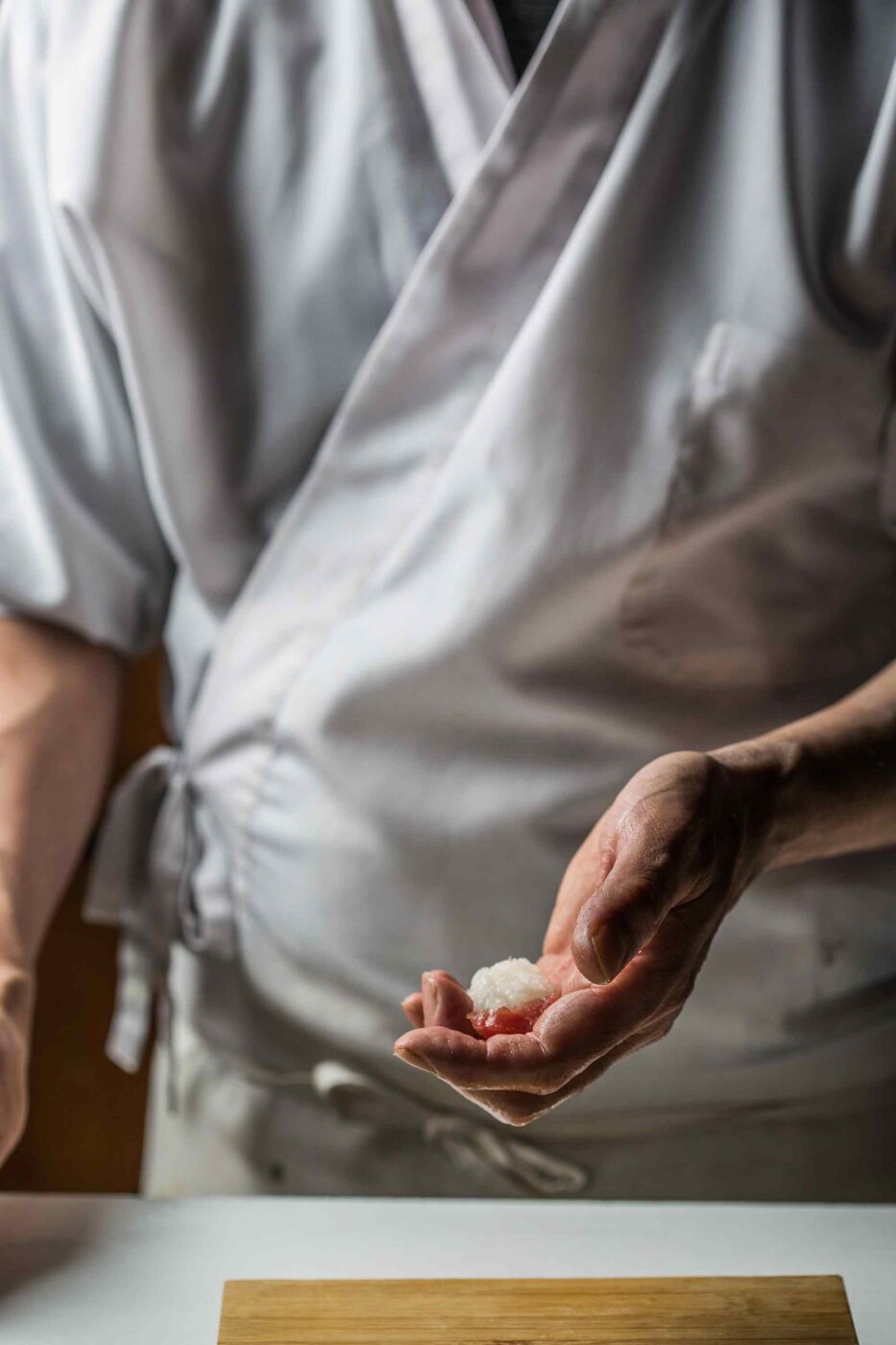
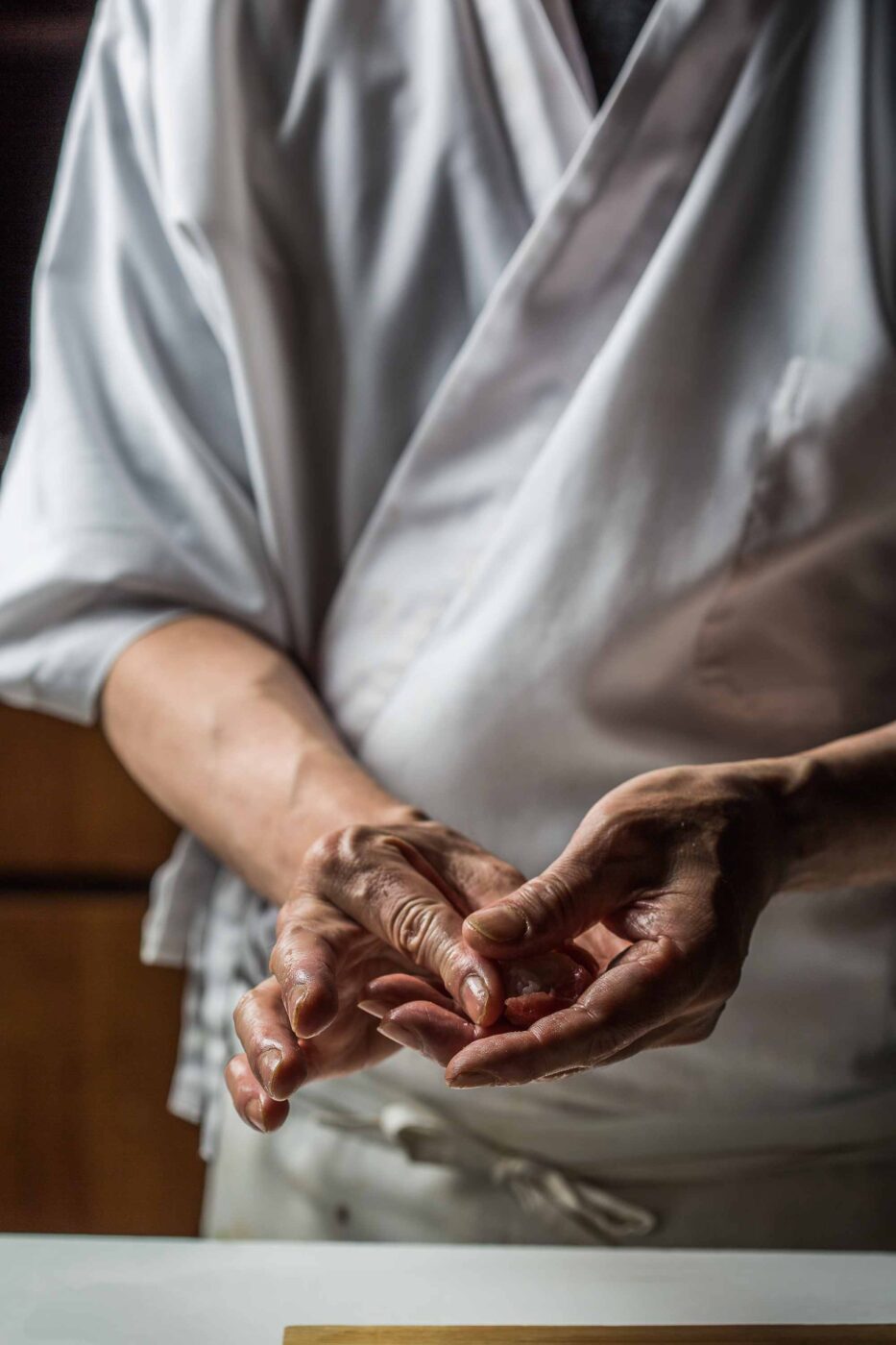
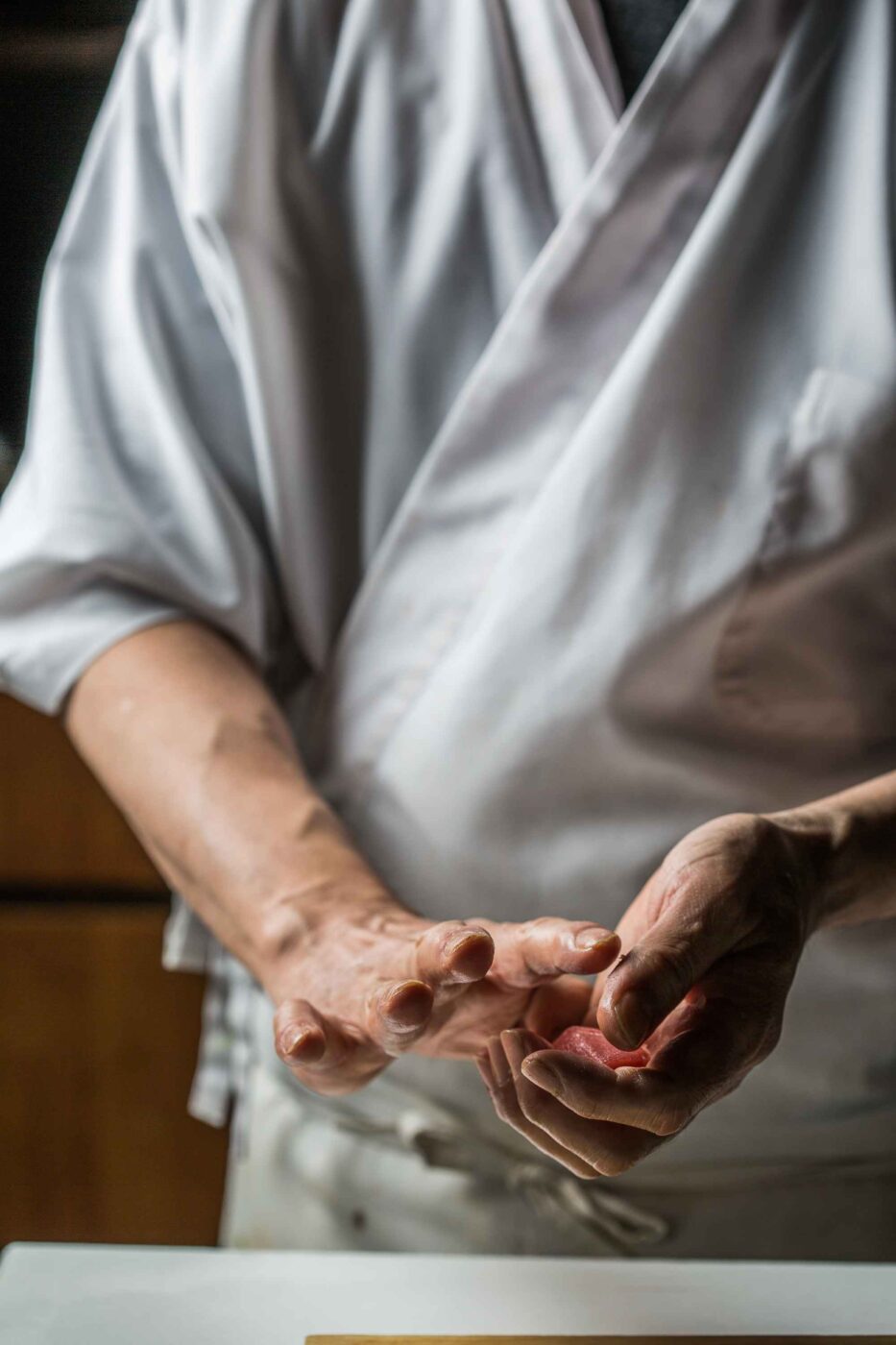
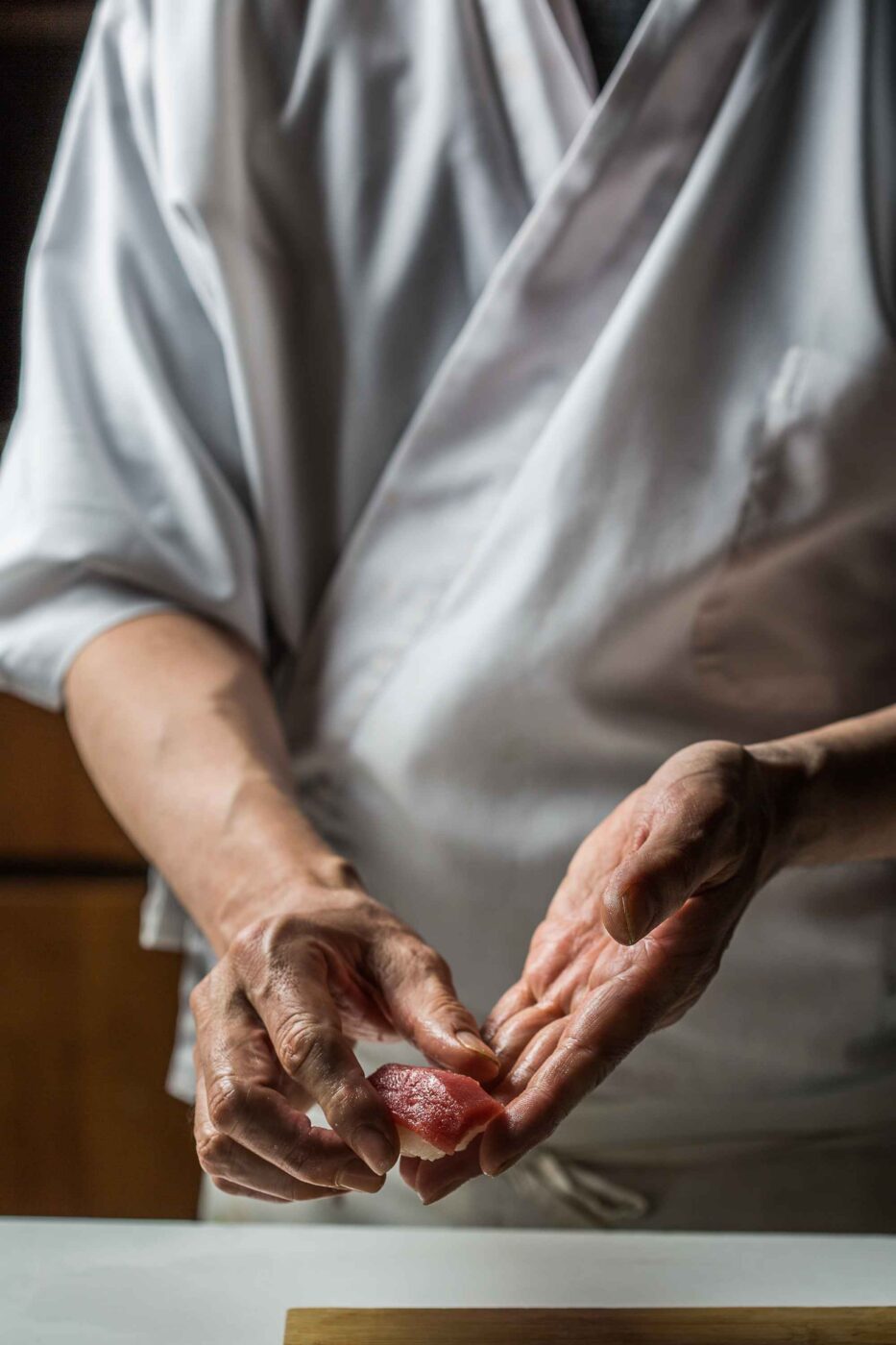
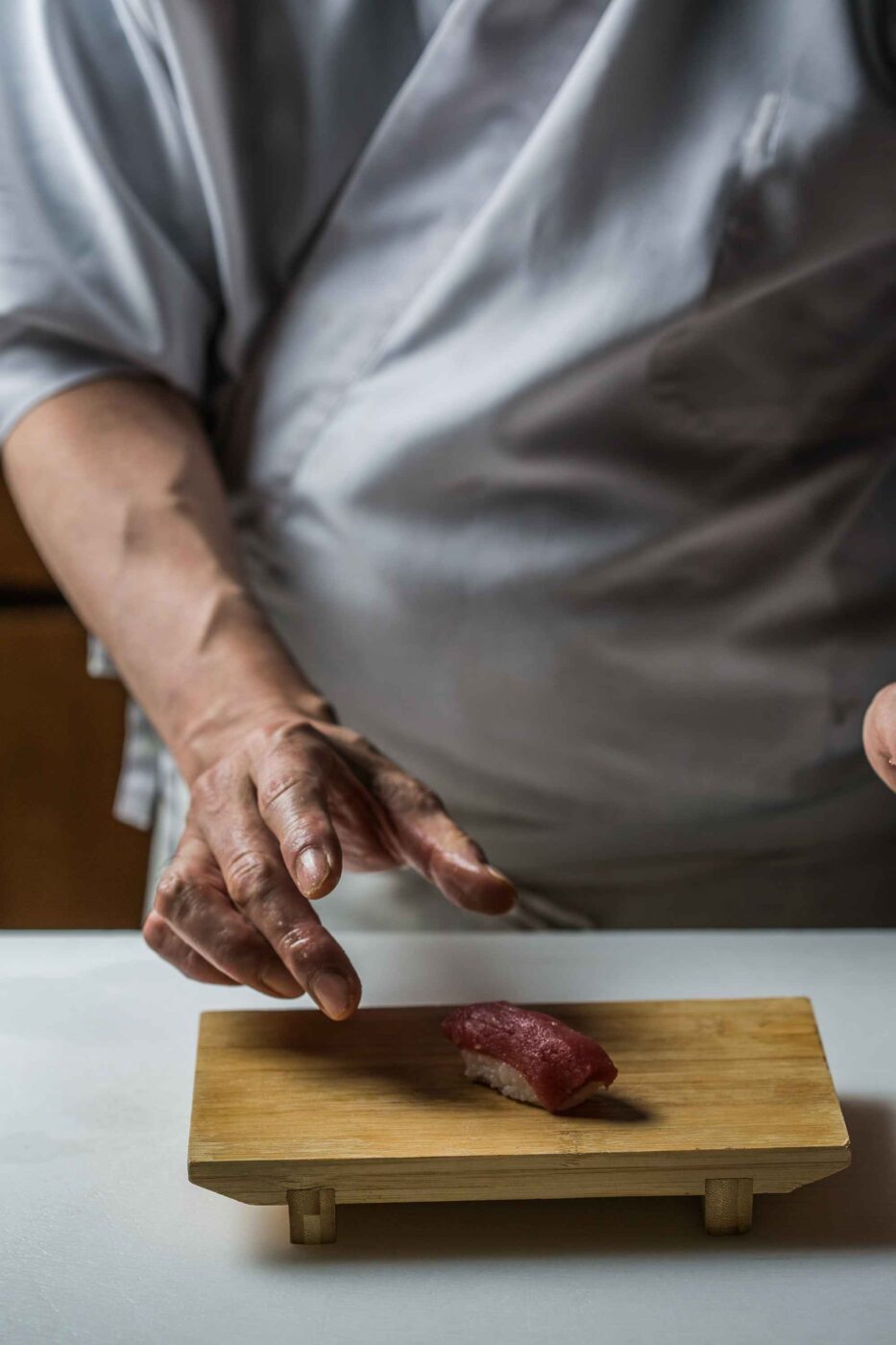
How to eat nigiri the right way?
Separate but compact, the grains leave air trapped within, forming a wonderfully tranquil bed for their maritime companion. This makes them so ethereal that the best way to place them in your mouth is between your thumb and index finger, but never pick them up by the ends. Chopsticks are not recommended, as the rice is likely to crumble. If you do choose to use them, place the right-hand ends on the hashioki (chopstick rest), parallel to the tray.
If the nigiri has no nikiri, you could opt to use shoga (pickled ginger) as a brush, briefly dipped first in soy sauce. And this is a question not only of flavour, but also aroma. Do not hesitate to raise the morsel to your nose and delicately smell the fragrance it gives off. Take note: never plunge the nigiri rice into soy sauce, on pain of being reprimanded by the chef. Further sacrilege: never peel off the covering of wonderful toro or chutoro to eat it separately. This would be to sully a centuries-old craft, to besmirch a sacred alliance between the umami of the bluefin tuna and the texture of the rice.
Eat it as soon as it is served, as the itamae has prepared it to be eaten warm, with all the qualities of its flavour at their optimal point of succulence. It must be eaten in one mouthful, or two at the most. But do not place it back on the dish if it has already been dismembered. Between each morsel, make use of pickled ginger, sake (best drunk while still chewing, to highlight the salty tones), and above all sips of tea, as the best way to cleanse the palate and ready yourself for the next mouthful.
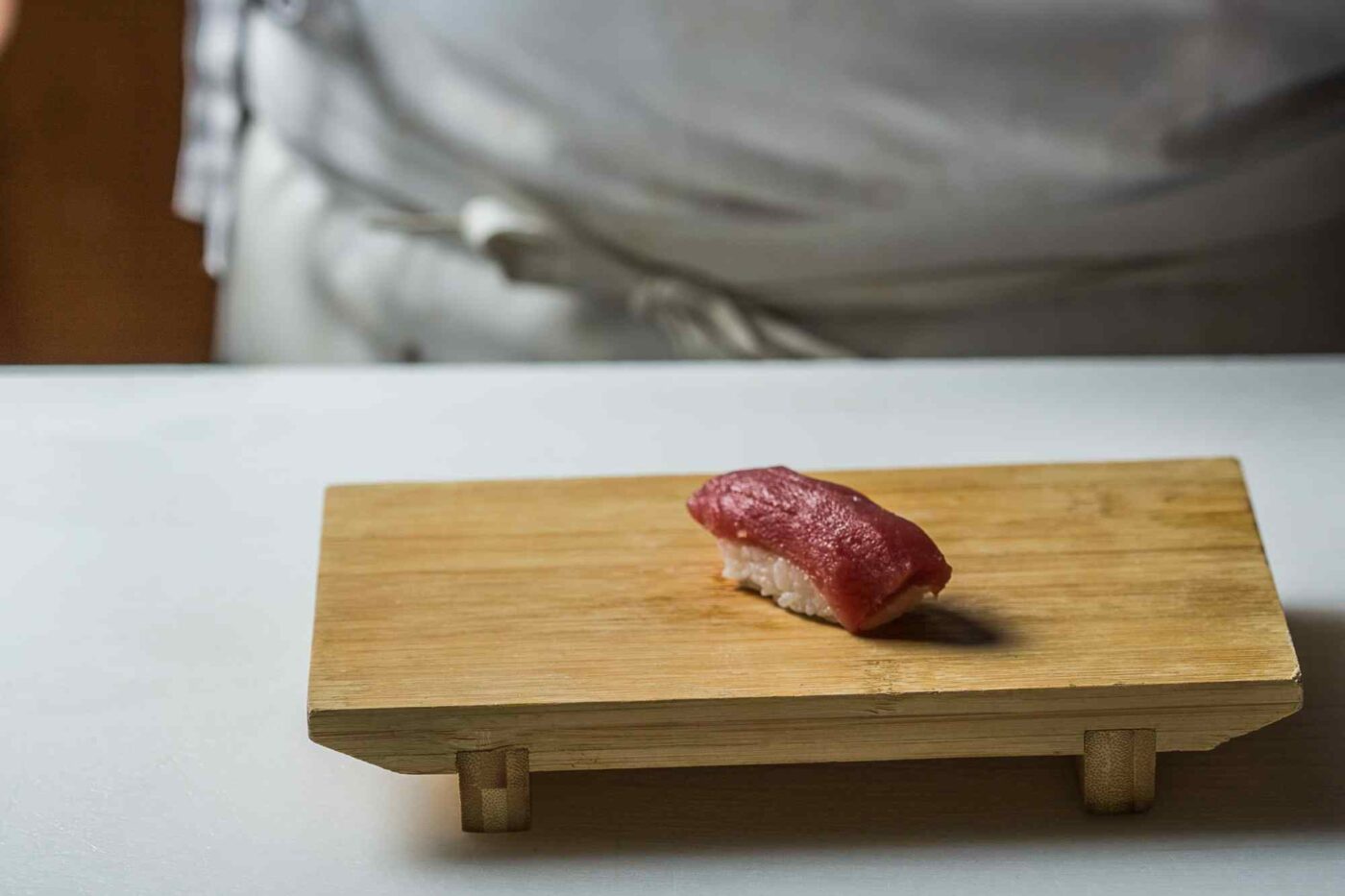
Many of my compatriots choose to eat sushi and nigiri only for lunch, taking no more than 20 minutes, while leaving other types of dish for dinner. Whatever your approach, after sampling the delights served up by the itamae it is considered polite to utter the phrase Gochisoosama deshita, which is simply an expression of gratitude towards the nature of what this food itself offers us.
